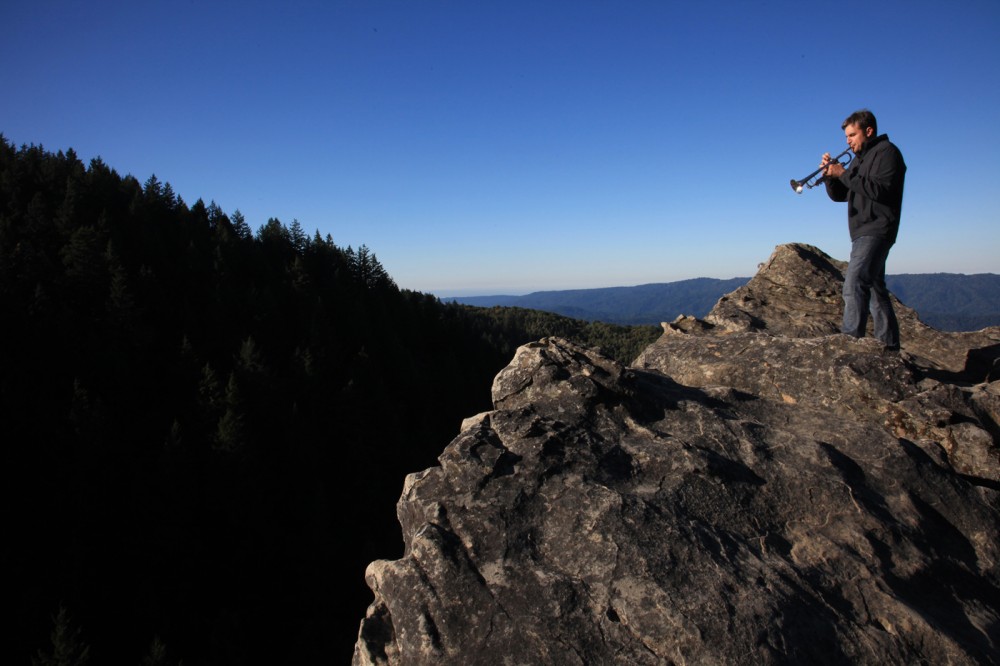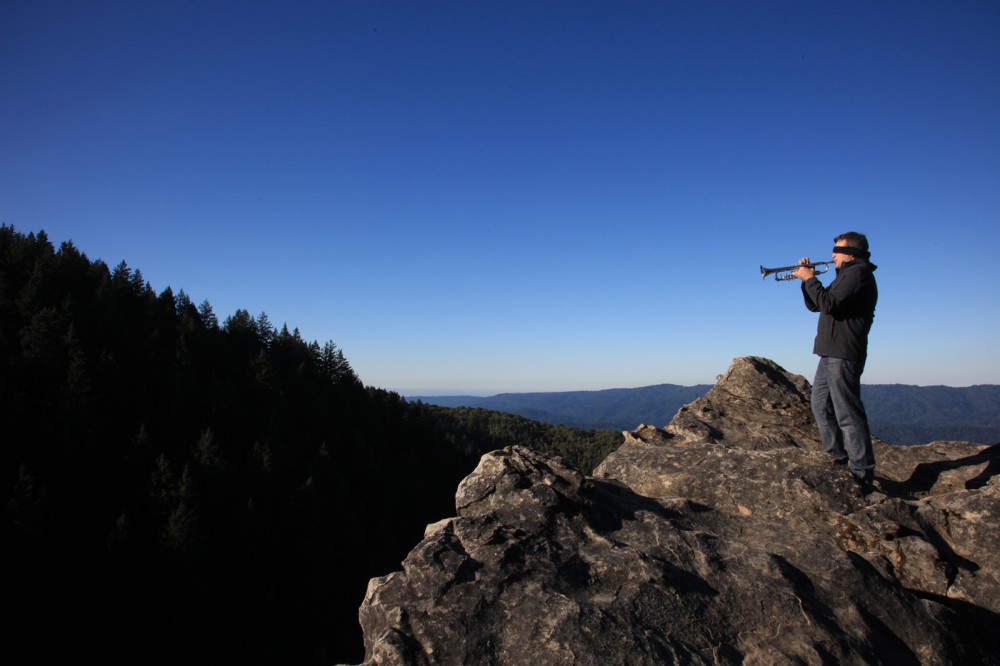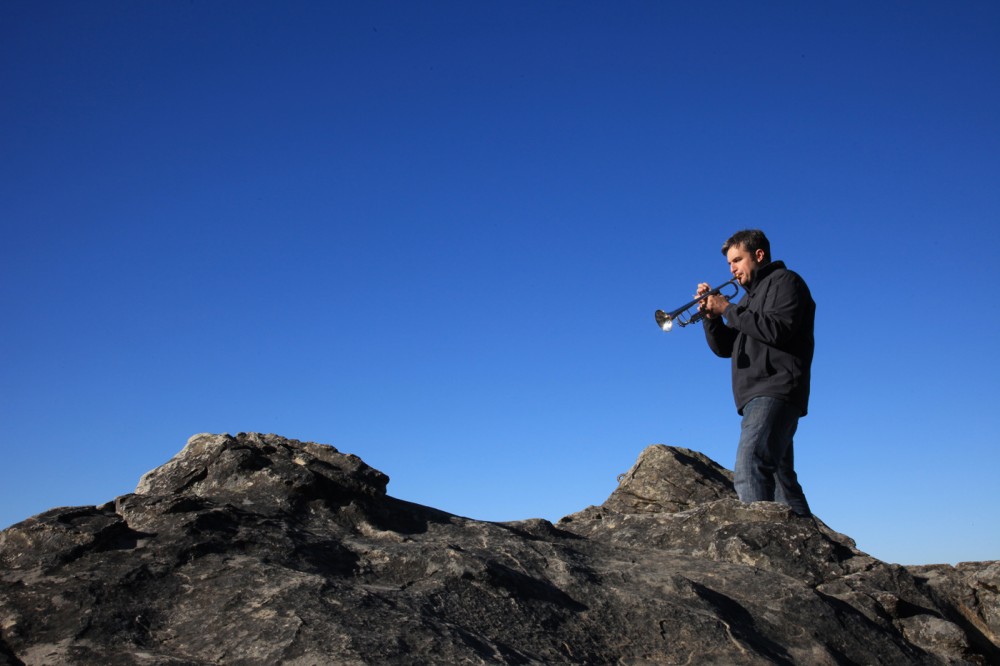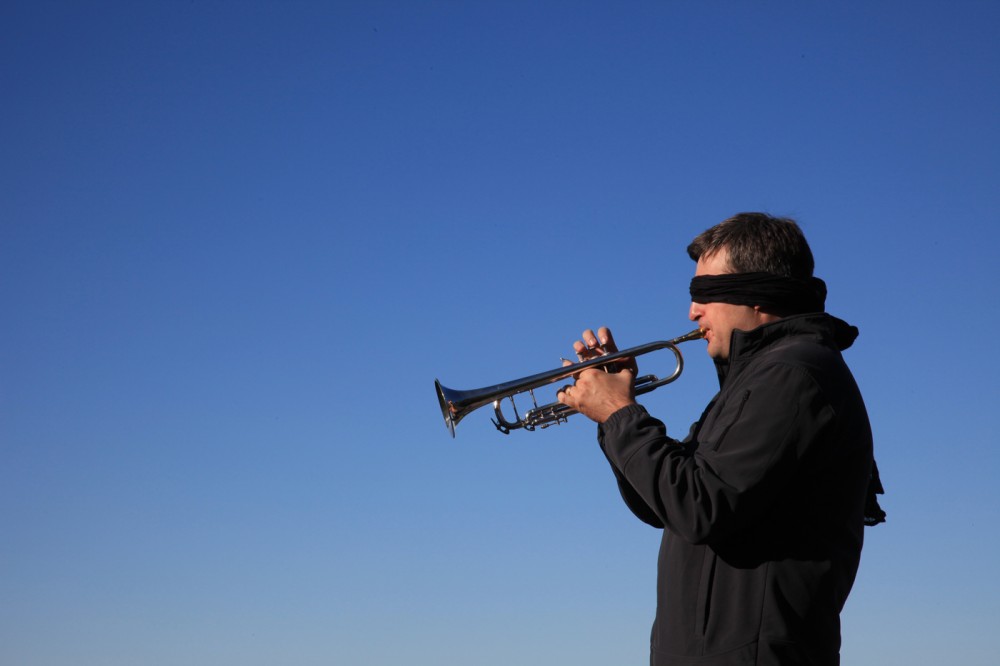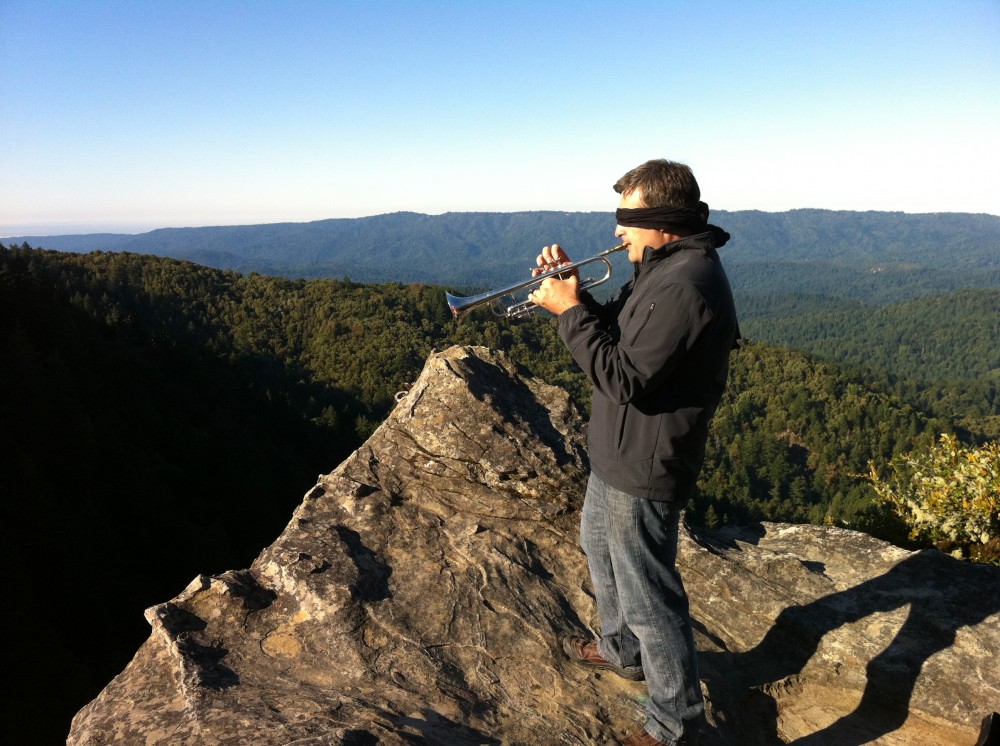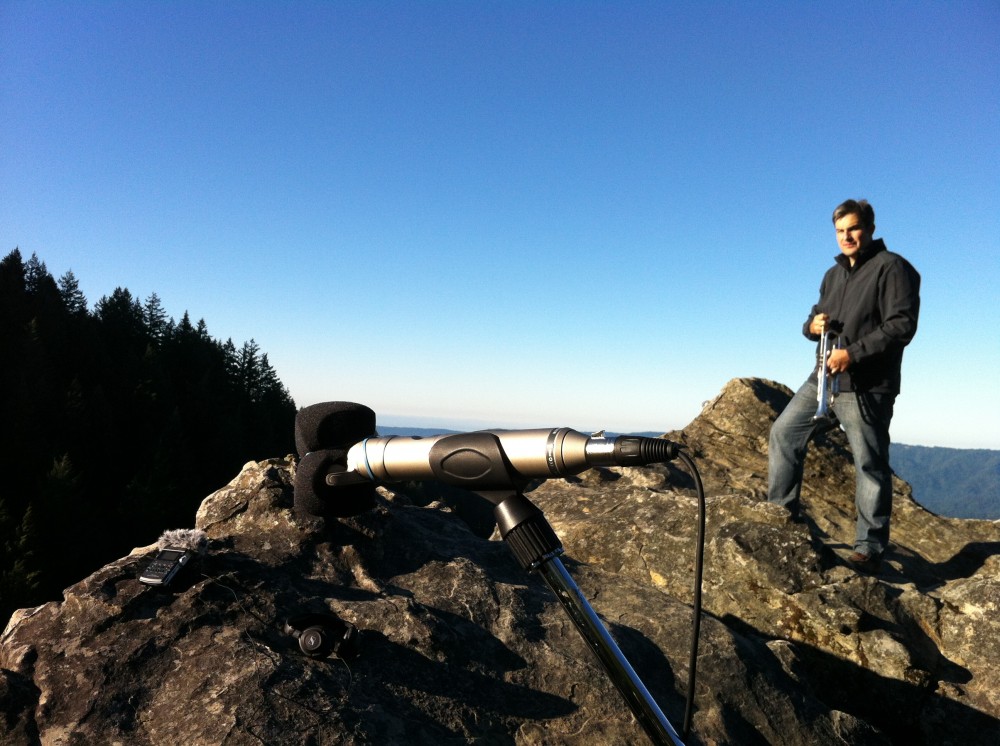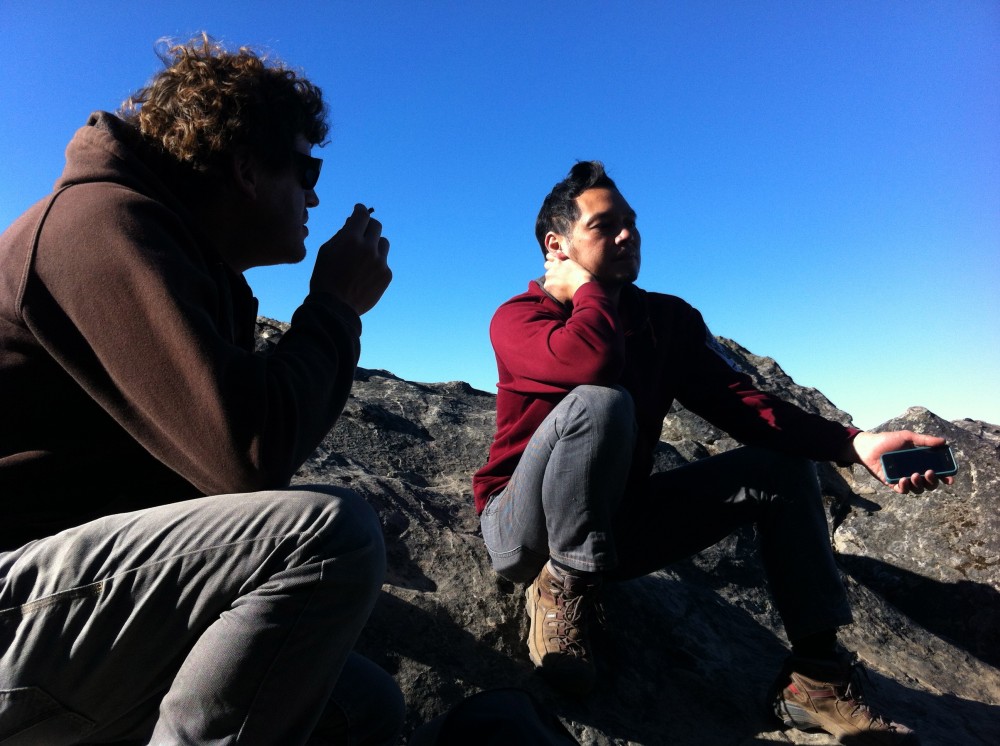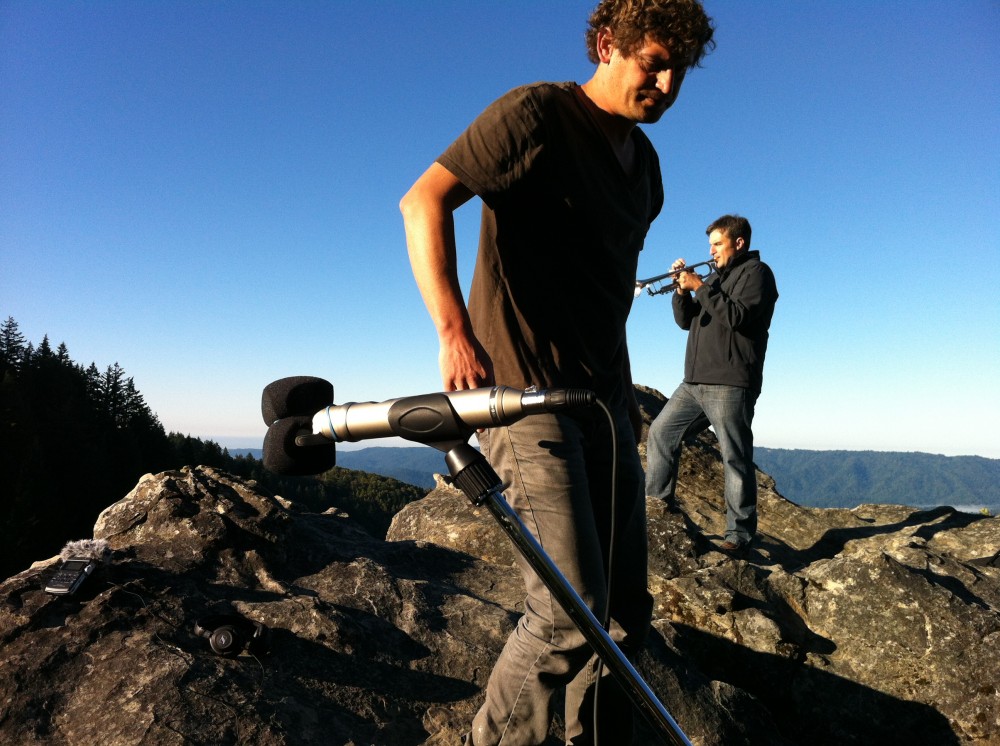Kris Tiner: In the Ground and Overhead
14 miniatures for muted trumpet
In the Ground and Overhead is the sixth release on Bakersfield-based Epigraph Records. Previous releases on digital, vinyl, and cassette have featured new music from local artists as well as guest appearances by unclassifiable musical innovators from around the world.
This set of 14 miniatures for solo muted trumpet was inspired by the sights, sounds, and creatures of one of California’s most serene and historic places. The music was created, performed, and recorded by Kris Tiner while in residence at Montalvo Arts Center in the forested foothills of the Santa Cruz Mountains. Incorporating the natural reverb of the John Bluth painters’ studio along with ambient recordings of the Montalvo grounds, In the Ground and Overhead is a focused and heartfelt meditation on nature and solitude by Tiner, a veteran of many acclaimed West Coast jazz and creative music ensembles including the Empty Cage Quartet, Tin/Bag, Psychic Temple, the Vinny Golia Quintet, and the Industrial Jazz Group. The Bandcamp download includes a PDF score and session photos. Also available on Spotify, Apple Music, and most other streaming services.
“Definitely a winner… It takes courage to make music this sensitive. It requires insight and good taste to be this sensitive without falling into the abyss of sentimentalism. It takes strength to reduce the feelings and musings to their bare essence, like a Japanese zen-drawing with only a few lines and lots of white space. Tiner’s tone is warm and precise, pure and velvety, subtle and nuanced. It takes a lot of artistry to produce something so personal with such universal value. Yes, it’s only 15 minutes long, but you just listen to it twenty times in a row. It’s guaranteed to be a fascinating listen, even after the twentieth time. And that’s a lot more than can be said about many much longer albums.”
– Stef Gijssels, The Free Jazz Collective
“Kris Tiner’s In the Ground and Overhead: 14 Miniatures for Muted Trumpet was composed and recorded in residence at California’s Montalvo Arts Center by the Santa Cruz Mountains, the physical setting of which inspired these short pieces for muted trumpet. The opening and closing improvisations as well as the twelve compositions in between are in effect symphonic poems for a solo instrument; each is made up of brief phrases or motifs that Tiner develops or departs from with a brisk economy of means. Most are of constrained compass or dynamic range—the mute certainly has a role to play there—but some break out into broader expressive territory. Tiner intended the pieces to reflect the beauty of his natural surroundings and the feeling of being alone within them. That he has done quite effectively.”
– Daniel Barbiero, Avant Music News
Previous reviews for Kris Tiner…
“Kris Tiner is a superbly fluid trumpeter, with a clean articulation in the upper register, deft valving, and a winning lyrical bent.”
– Jason Bivins, Cadence Magazine
“Extraordinarily inventive… suggesting still-untapped potentials in Miles Davis’s legacy – it’s as if Tiner has plumbed the most daring, piercing moments in Davis’s music to propose a boldface musical language utterly different from the usual stylized fragility of Miles disciples.”
– Nate Dorward, Signal to Noise Magazine
“Kris Tiner’s trumpet is perfectly suited to the moment.”
– Dave Cantor, DownBeat

Recording in the John Bluth Studio at Montalvo Arts Center.

